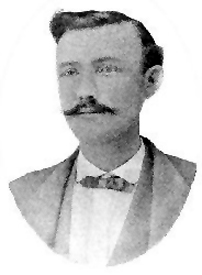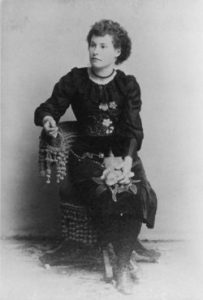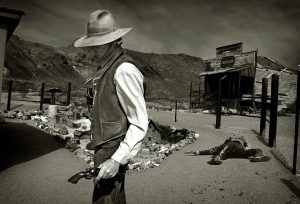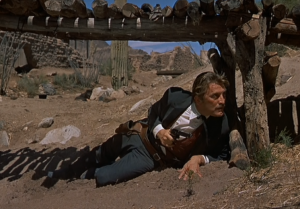gunfighters
 Gunfighters were a big part of what we think of when we think of the Old West. The reality is that there were probably a lot less gunfights that we have been led to believe, and most were not held in the way that we all think. Many were quickly started when tempers flared, and then over in a moment. The whole meeting on “Main Street at high noon” thing didn’t happen very much. Nevertheless, gunfighters were a part of the Old West and many were truly mean and evil people.
Gunfighters were a big part of what we think of when we think of the Old West. The reality is that there were probably a lot less gunfights that we have been led to believe, and most were not held in the way that we all think. Many were quickly started when tempers flared, and then over in a moment. The whole meeting on “Main Street at high noon” thing didn’t happen very much. Nevertheless, gunfighters were a part of the Old West and many were truly mean and evil people.
William “Texas Billy” Thompson (1845-1897), was the brother of the more famous gunman Ben Thompson. Apparently Billy felt the need to live up to an surpass his brother’s reputation. Billy was often described as “mean, vicious, vindictive and totally unpredictable.” Billy and his brother, Ben emigrated from Yorkshire, England with their family to Austin, Texas in 1851, when he was just a boy. When the Civil War began, both men enlisted in the Texas Mounted Rifles. After the war, there were a number of federal troops who remained in Texas for several years, which annoyed the people of Texas. In March, 1868, Billy was involved in a gunfight with a Private William Burk. After killing the soldier, Billy fled the area. Two months later, Billy killed another man in Rockport, Texas and when a warrant was issued for his arrest, he was on the run again, first to Indian Territory and then to Kansas.
While in Abilene, Kansas, Billy met a dance hall girl and prostitute named Elizabeth “Libby” Haley. Haley went by the alias of “Squirrel Tooth Alice.” The two quickly began an affair that would eventually lead to marriage and nine children. Billy made his living as a gambler. He and his brother Ben, were living in Ellsworth, Kansas in April, 1873. Four months later, in August, Billy’s temper got the best of him again, and killed Sheriff Chauncey Whitney. He was on the run again.
Billy had a reputation for constantly being trouble for one thing or another. This meant that Billy and Libby were constantly moving. The Texas Rangers finally caught up with Billy in October 1876, and was extradited to Kansas. Amazingly, he was acquitted of the murder of Sheriff Whitney. He must have had a great attorney, because everyone knew he did it. Billy made his way to Dodge City, Kansas. There is also evidence that places him in Colorado and Nebraska, before he and Libby finally settled down in Sweetwater, Texas. He purchased and worked a ranch, while she established a brothel in town. In 1884, he was reportedly in San Antonio and witnessed his brother being gunned down by assassins. Billy took no revenge on his brother’s killers. Maybe he had lost his taste for killing and running. On September 6, 1897, William Thompson died from a stomach ailment at the age of 52.
 When we think of the outlaws of the old west, the term “gunfighter” or “gunslinger” were not the terms used to describe those men, or even the lawmen that some of them became upon changing their ways. They were actually originally called pistoleers, shootists, bad men, or one we do know…gunmen. That being said, Bat Masterson, who was a noted gunfighter himself, who later became a writer for the New York Morning Telegraph, sometimes referred to them as “gunfighters,” but, more often as “man killers.”
When we think of the outlaws of the old west, the term “gunfighter” or “gunslinger” were not the terms used to describe those men, or even the lawmen that some of them became upon changing their ways. They were actually originally called pistoleers, shootists, bad men, or one we do know…gunmen. That being said, Bat Masterson, who was a noted gunfighter himself, who later became a writer for the New York Morning Telegraph, sometimes referred to them as “gunfighters,” but, more often as “man killers.”
I suppose that Bat Masterson was probably the one who coined the term “gunfighter” in the first place, but many people from that era must have thought it an odd term to use. Still, if you heard an outlaw called a pistoleers, wouldn’t you have wondered what that was supposed to be? I would have, but then I would have looked it up and found that a pistoleers was “a soldier armed with a pistol.” That would have made no sense to me either, but in reality, some of the outlaws were soldiers who didn’t want to fight for a cause they didn’t believe in, so their deserted and headed west, so I guess they could have been pistoleers.
Another “movie mix-up” that happened is that in the old west, pistoleers or shootists didn’t squarely face off with each other from a distance in a dusty street, like they would like us to believe. In reality, the “real” gunfights of the Old West were rarely that “civilized.” Many fought in the many range wars and feuds of the Old West, which were far more common that the “stand-off” gunfight. Most of these were fought over land or water rights, some were political, and others were simply “old Hatfield-McCoy” style differences between families or in lifestyles. These people fought from the protection of anything available like a watering trough, a wall, building, or even a horse. Of those that more easily fit the perception of the “gunfighter,” you would find that they didn’t kill anywhere near the number of men they are credited with on television. In many instances their reputations stemmed from one particular fight, and the rumors grew from there, making people think they were that good. In other cases, self-promotion led people to believe they were lethal shootists, such was the case with Wyatt Earp and Wild Bill Hickok.
There were other, lesser known shootists, who actually saw just as much, if not more action than their well-known counterparts. Men like Ben Thompson, Tom Horn, Kid Curry, Timothy Courtright, King Fisher, Scott  Cooley, Clay Allison, and Dallas Stoudenmire, just to name a few, were often not credited for nearly the shooting ability of the well known shooters. Often these gunfighters, whose occupations ranged from lawmen, to cowboys, ranchers, gamblers, farmers, teamsters, bounty hunters, and outlaws, were violent men who could move quickly from fighting one side of the law to the other, depending on what suited them best at the time. Though many of these gunman died of “natural causes,” many died violently in gunfights, lynchings, or legal executions. The average age of death was about 35. However, of those gunman who used their skills on the side of the law, they would persistently live longer lives than those that lived a life of crime.
Cooley, Clay Allison, and Dallas Stoudenmire, just to name a few, were often not credited for nearly the shooting ability of the well known shooters. Often these gunfighters, whose occupations ranged from lawmen, to cowboys, ranchers, gamblers, farmers, teamsters, bounty hunters, and outlaws, were violent men who could move quickly from fighting one side of the law to the other, depending on what suited them best at the time. Though many of these gunman died of “natural causes,” many died violently in gunfights, lynchings, or legal executions. The average age of death was about 35. However, of those gunman who used their skills on the side of the law, they would persistently live longer lives than those that lived a life of crime.

